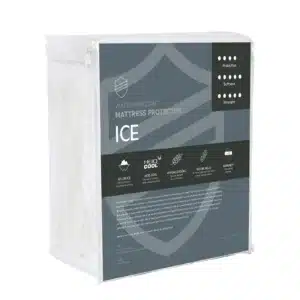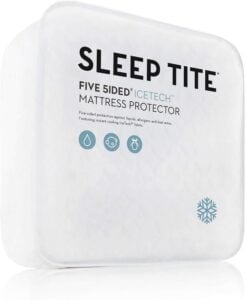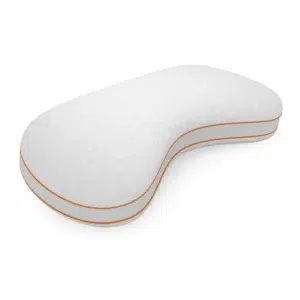The global push towards environmental sustainability has brought to light the significance of making eco-conscious decisions in various aspects of our lives. One area that has gained increasing attention is the environmental impact of mattresses. With millions of mattresses reaching the end of their lifespans each year, landfills are being burdened with these bulky, non-biodegradable waste items. In response, there is a growing demand for eco-friendly mattress options that align with consumers’ environmental values. In this article, we will provide a brief overview of the environmental concerns surrounding mattresses, emphasize the importance of understanding the sustainability of different mattress types, and explore the rising interest in eco-friendly alternatives.
Traditional innerspring and memory foam mattresses typically have a lifespan of 7 to 10 years. Once they reach the end of their functional life, these mattresses pose a significant disposal challenge. It is estimated that around 20 million mattresses are discarded annually in the United States, occupying valuable landfill space and releasing harmful greenhouse gases as they decompose. While recycling and repurposing programs for mattresses do exist, the complex construction and composition of these products make it difficult to fully recycle or break down their components, resulting in many still ending up in landfills.

Materials Used in Mattress Production and Their Environmental Impact
Synthetic materials, such as polyurethane foam, petroleum-based foams, and memory foam, are prevalent in mattress production. The manufacturing processes of these materials are energy-intensive and frequently involve the use of hazardous chemicals, which can negatively impact the environment. Furthermore, synthetic foam mattresses are known to emit volatile organic compounds (VOCs) through off-gassing, potentially compromising indoor air quality and posing health risks to consumers.
Natural materials, including latex, cotton, and wool, are often regarded as more eco-friendly alternatives for mattress production. These renewable and biodegradable materials offer a more sustainable choice for the environment. However, it is crucial to consider the environmental repercussions of farming practices, such as pesticide use and land degradation, when assessing the overall sustainability of these materials.
Sustainable and Eco-Friendly Mattress Alternatives
Organic mattresses, manufactured from materials that are grown and processed without the use of harmful chemicals, present an environmentally friendly option for consumers. To ensure the authenticity of an organic mattress, look for certifications such as the Global Organic Textile Standard (GOTS) or the Global Organic Latex Standard (GOLS).
Plant-based memory foam and bio-foam options incorporate renewable resources like soy and castor oil, which replace a portion of the petroleum-based ingredients typically found in foam mattresses. These eco-friendly alternatives can decrease the environmental impact of foam production while maintaining the comfort and support of conventional memory foam.
Some mattress manufacturers are adopting recyclable and biodegradable materials in their products. By utilizing materials that can be easily recycled or that decompose more rapidly in landfills, these companies are actively working to mitigate the environmental impact of mattress disposal.

How to Choose an Environmentally Friendly Mattress
When searching for an eco-friendly mattress, evaluate the materials used, the manufacturing process, and the disposal options for the product. Seek out certifications and third-party testing to verify that the mattress meets environmental standards. Be cautious of greenwashing tactics, where companies employ misleading marketing strategies to create the illusion of their products being more sustainable than they genuinely are.

The Benefits of Choosing an Eco-Friendly Mattress
As more consumers prioritize sustainability and environmental responsibility, the demand for eco-friendly mattresses has surged. Choosing an eco-friendly mattress comes with several benefits, both for the environment and for the individual consumer. Here are some of the most notable advantages of opting for a green mattress:
Reduced Environmental Impact: By selecting a mattress made from sustainable, renewable, or recyclable materials, you can help reduce the strain on natural resources, minimize waste, and lower greenhouse gas emissions associated with traditional mattress production and disposal.
Healthier Sleep Environment: Eco-friendly mattresses typically contain fewer harmful chemicals and have reduced off-gassing issues compared to conventional mattresses. This leads to a healthier sleep environment, as there is less exposure to volatile organic compounds (VOCs) that may impact indoor air quality and pose potential health risks.
Hypoallergenic and Antibacterial Properties: Some eco-friendly materials, like natural latex and organic cotton, have hypoallergenic and antibacterial properties, offering added benefits for allergy sufferers and promoting a cleaner sleeping surface.
Improved Durability and Longevity: Sustainable materials, such as natural latex, often provide greater durability and a longer lifespan than their synthetic counterparts. This means that an eco-friendly mattress may need to be replaced less frequently, further reducing the environmental impact of mattress disposal.
Support for Sustainable Practices: When you purchase an eco-friendly mattress, you are supporting companies that prioritize sustainability and environmentally responsible practices. This consumer support can drive positive change within the industry, encouraging more manufacturers to adopt eco-friendly methods and materials.
Enhanced Comfort and Support: Many eco-friendly mattress options, such as plant-based memory foam and organic latex, offer exceptional comfort and support. This means that you don’t have to sacrifice a good night’s sleep when making an environmentally conscious choice.
Final Thoughts
Each year, a staggering number of mattresses end up in landfills, contributing to waste and environmental concerns. In the United States alone, it is estimated that approximately 20 million mattresses are discarded annually. These bulky, non-biodegradable items take up valuable landfill space and release harmful greenhouse gases as they decompose.
The time it takes for a mattress to decompose in a landfill can vary significantly, depending on the materials used in its construction. On average, it is estimated that a traditional innerspring or memory foam mattress can take between 80 to 120 years to fully break down. Factors that can influence the decomposition rate include the presence of synthetic materials like polyurethane foam and the landfill conditions.
Considering the environmental impact of mattresses is essential for consumers aiming to make sustainable choices. By comprehending the distinctions between traditional and eco-friendly mattress options, you can make informed, earth-conscious decisions and contribute to a greener future while enjoying a restful night’s sleep.
Our Natural Mattress Picks
Below is a list of some of the most popular natural mattresses on the market, offering a comfortable and responsible sleep experience.
Avocado Green Mattress: This hybrid mattress combines GOLS-certified organic latex with a supportive innerspring system. With a GOTS-certified organic cotton cover and natural wool fire barrier, the Avocado Green Mattress is known for its comfort, breathability, and eco-friendly materials.
PlushBeds Botanical Bliss: The Botanical Bliss is an all-latex mattress made from GOLS-certified organic latex, GOTS-certified organic cotton, and natural wool. With customizable firmness levels, this mattress offers an impressive combination of support and pressure relief.
Birch by Helix: This hybrid mattress features natural Talalay latex, individually wrapped coils, and an organic cotton cover, providing a comfortable sleep surface with excellent motion isolation. The Birch mattress also incorporates natural wool for temperature regulation and a natural fire barrier.
Naturepedic Serenade: The Serenade is a certified organic hybrid mattress made with GOLS-certified organic latex and a supportive pocketed coil system. The mattress is covered in GOTS-certified organic cotton and features a natural wool fire barrier, ensuring a comfortable and eco-friendly sleep experience.
Zenhaven by Saatva: This flippable all-latex mattress is made from 100% natural Talalay latex, featuring two different firmness levels to cater to a variety of sleep preferences. With an organic cotton cover and natural wool fire barrier, the Zenhaven mattress delivers comfort and sustainability.
Awara Organic Luxury Hybrid: The Awara Organic Luxury Hybrid mattress combines natural Dunlop latex with a premium innerspring support system. With an organic cotton cover and natural wool fire barrier, this mattress offers excellent pressure relief, support, and breathability.
These popular natural mattresses showcase the best in eco-friendly sleep solutions, offering consumers a responsible choice without compromising on comfort and support. By considering these options and researching other sustainable products, you can make an informed decision that benefits both your sleep and the environment.
The decomposition time for an organic mattress is generally shorter than that of a traditional mattress, due to the use of natural and biodegradable materials. However, the exact time it takes for an organic mattress to decompose can still vary, depending on factors such as the specific materials used, landfill conditions, and local climate.
Organic mattresses typically incorporate materials like organic cotton, wool, and natural latex, which tend to break down more quickly than synthetic materials. While it is difficult to provide an exact timeframe for decomposition, organic mattresses are generally considered a more environmentally friendly option due to their use of renewable resources, biodegradable materials, and reduced reliance on harmful chemicals. This is why recycling and repurposing organic mattresses, when possible, remains a crucial step in reducing the overall environmental impact of mattress disposal.


















